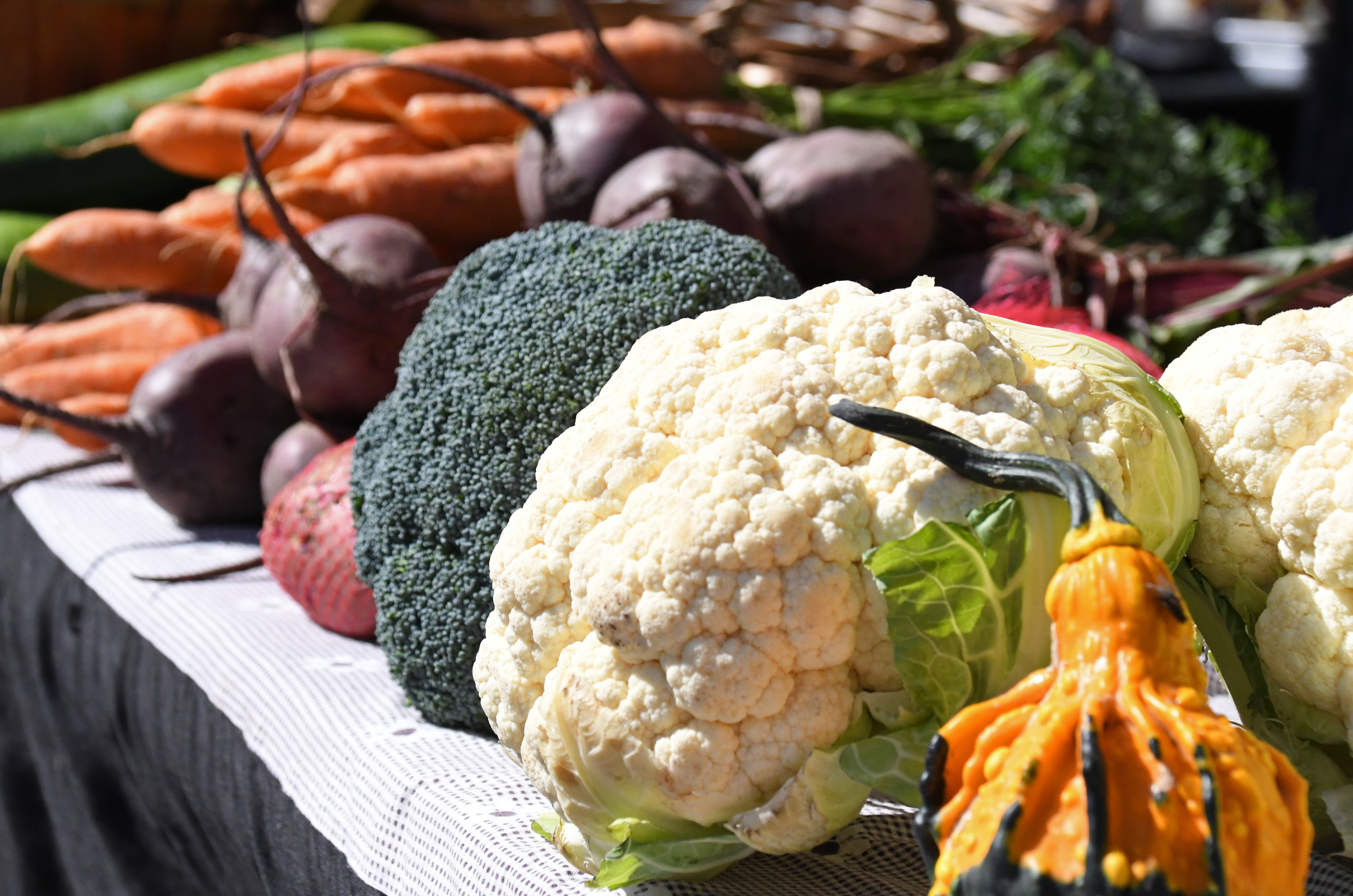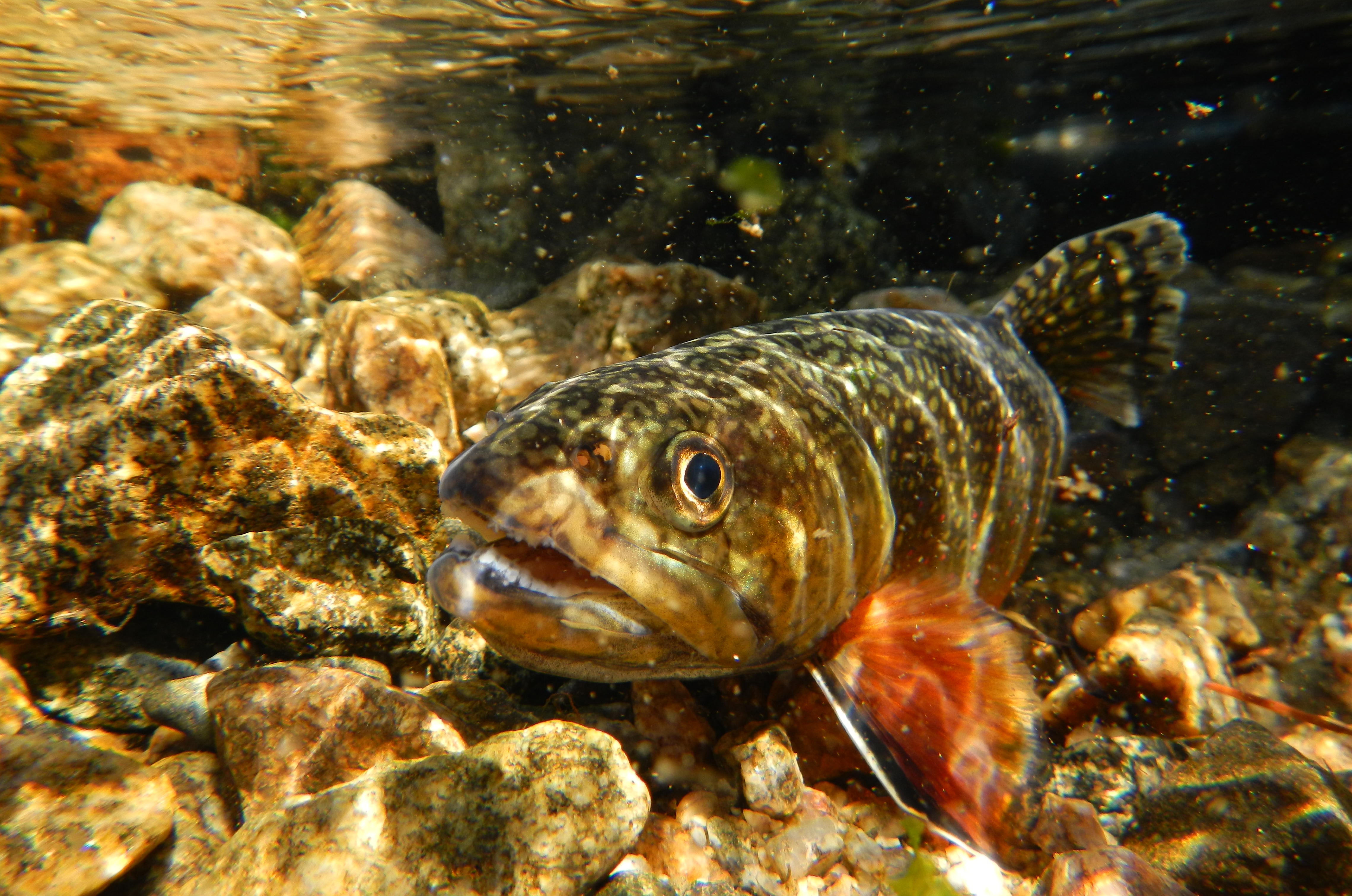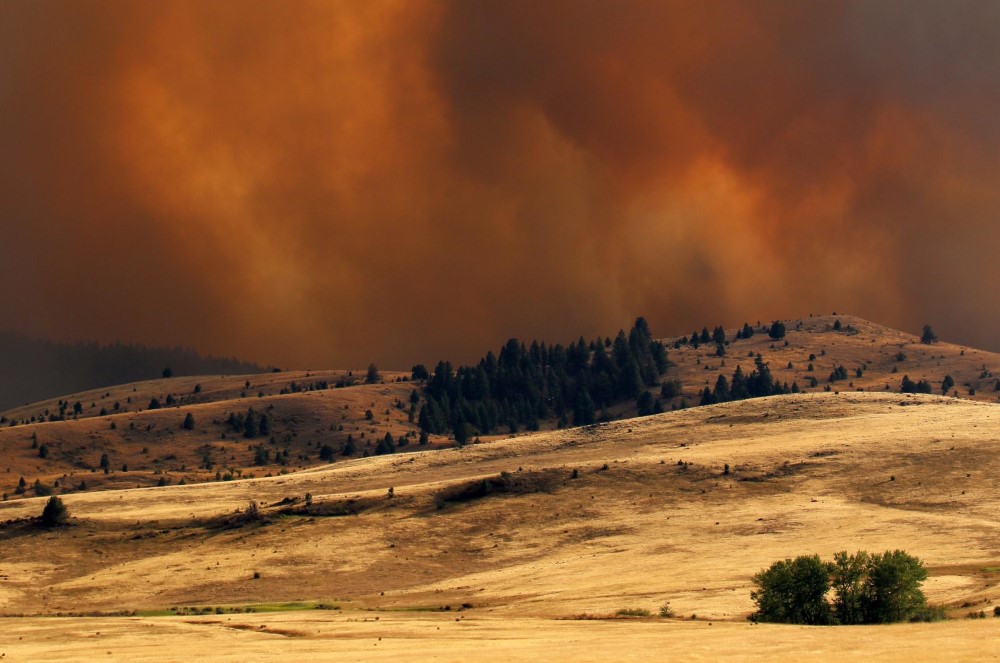Climate change is happening all around us – in our back yards, farms, towns, shorelines, lakes and rivers.
Disasters related to the climate are now daily news. Prolonged drought, wilder wildfires, blistering heat waves, poor air quality and more intense storms and floods are increasingly common.
If you haven’t lived through at least one of these disturbing weather events in the last few years, you’ve at least observed how much hotter, drier, wetter or windier it has become where you live.
Because the impact of climate ripples through so much of our lives, it’s worth a close look at the
cascading effects.
Heat Is Fierce, Water Is Scarce
Longer and more severe droughts and heat waves are at the heart of most climate change discussions.
In early September, an analysis by the Washington Post found that nearly two in three Americans had experienced a heat wave in the previous three months.
Last spring, the Environmental Protection Agency (EPA) analyzed nearly 60 years of temperature
data for the 50 largest cities in America. The results are sobering.
In nearly every one of those cities, heat waves are now happening more often, lasting longer, occurring across more months of the year and bringing even more out-of-the-ordinary temperatures.
In September, the U.S. Department of Interior reported that 47 percent of the country was experiencing severe or extreme drought conditions, particularly in western states and the Missouri River basin, which stretches into the Dakotas, Nebraska, Iowa, Kansas and Missouri.
In California and the Colorado River basin, some reservoirs are at 30-year lows. Lake Powell and Lake Mead are at historic lows. In New Mexico, the Elephant Butte Reservoir – the largest reservoir in that state – is at a mere five percent of its capacity.
Many municipalities are now struggling just to provide clean drinking water. Higher temperatures and fertilizer runoff also triggered dangerous algal blooms this year. Water officials in Des Moines, Iowa, have turned to drilling into underground water supplies rather than relying on contaminated river water.
 Grow your own. Climate change also affects access to food, like these veggies at the Chokecherry Festival in Lewistown, Mont.
Grow your own. Climate change also affects access to food, like these veggies at the Chokecherry Festival in Lewistown, Mont.
The Food We Eat
The relationship between weather and agriculture is apparent to everyone who grows things outdoors. Climate change will alter what you eat.
A reliable water supply is essential for growing the vegetables we eat and for sustaining all plants and animals. Cattle, chickens and sheep need good pastureland, hay and other farm-raised foods.
Drought causes a decline in all agricultural output, as we’ve witnessed this past summer in the northern and western United States. Lack of hay has forced ranchers to reduce their herds.
As food prices have climbed at our grocery stores due to climate – and pandemic-related supply-chain pressures – everyone has felt the impact.
In 2018, a study by the University of Arizona predicted vegetable yields will fall by 35 percent by the end of this century due to water shortages, higher soil salinity, more extreme temperatures and less filtering of the sun’s rays.
Looking ahead, drought, compounded by harsher heat and sunlight, could shift crop choices from sun-sensitive vegetables, such as lettuce, to root foods like beets and carrots. With these crop-growing challenges, the wide array of fruits and vegetables in the local grocery store would become more limited.
 Water temperatures of 70 degrees or more can be lethal to brook trout.
Water temperatures of 70 degrees or more can be lethal to brook trout.
Wildlife in Peril
The obvious impact of climate change on wildlife is the degradation or loss of habitat, particularly due to prolonged drought, heat or intense widespread wildfire.
A 2020 study published in the journal Proceedings of the National Academy of Sciences of the United States found that “one-third of all animal and plant species on the planet could face extinction by 2070 due to climate change.”
Every species is adapted to a certain temperature range. For example, brook trout thrive when water temperatures range from the mid-40s F to about 60. But if the water warms to 70 degrees, they die. As water heats up, other species of aquatic plants and animals might move in and then outcompete and push out native species. Warmer water can also trigger harmful algal blooms.
Some species that need cold weather, like polar bears and pikas, are at great risk. But the fate of more adaptable animals is difficult to predict. Whitetail deer suffer from low reproduction rates when winters are severe but commonly give birth to twin fawns when conditions are less harsh, so you might think whitetails would benefit from a warming climate. It’s not that simple.
As temperatures rise, dry spells last longer, rainstorms become more intense and infectious diseases in deer, like epizootic hemorrhagic disease, are expected to increase in prevalence and severity. And how will the increase in ticks and other parasites affect deer, elk, moose and other ungulate populations? Time will tell.
Climate change affects populations of useful pollinators and other insects and pests. Disruptions in the balance of beneficial insects affect U.S. food production and wildlife.
The story of how climate upsets the balance of nature is urgent, but not new. The topic was explored in detail in the cover story for the Fall 2007 Outdoor America, titled “Feeling the Heat: Global Warming Hits Home for Hunters and Anglers.” The article covered climate shifts’ effect on fish, fowl, pests and invasive species. It concludes, “hunters’ and anglers’ voices should be among the loudest calling for action on global warming.”
How We Travel
In 2011, Tropical Storm Irene dumped 11 inches of rain on upstate New York and New England in 12 hours. I watched the storm from a lakeside cottage in the northern Adirondack Park. About five hours into the deluge, the lakeshore disappeared below the dark, rising water but our house was spared from flooding. Friends across Lake Champlain in Vermont were less lucky. The road to their house washed out, leaving them stranded on the roof of their one-story home. Irene damaged 2,000 roads, washed out 1,000 culverts and closed 200 bridges in Vermont alone.
Due to climate change, severe storms are occurring more frequently, causing immense damage from flooding. “Hundred-year storms” are sometimes occurring several times per decade, disrupting transportation corridors as they damage neighborhoods. Auto and air travel, two contributors to the climate crisis, are also victims of it.
Take roads, which are engineered for a particular range of local weather conditions. Extreme heat and cold cause degradations like potholes, cracking and heaving. What’s more, many roadways are in low-lying areas that are the most prone to flooding. As our weather patterns become wilder, our roadways will need to be repaired and replaced more often.
According to the EPA, transportation systems in the United States are designed to last at least 50 years with the ability to withstand local weather patterns based on historical records. But nowadays, historical patterns are no longer a reliable basis for planning.
Air travel is also vulnerable to climate change. If you fly much, you’ve noticed that weather grounds airplanes more often these days regardless of the location. Coastal areas, where many major airports are located, are at higher risk of flight disruptions as flooding becomes more frequent. Hotter air also reduces lift during takeoff and inhibits a plane’s ability to climb efficiently.
 Harmful air and water pollution accompany wildfire seasons which are longer and more severe due to climate change.
Harmful air and water pollution accompany wildfire seasons which are longer and more severe due to climate change.
Outdoor Recreation
How does climate change affect your ability to enjoy the great outdoors? You’re in luck if you like to ride a bike.
“We estimate that climate change will increase the demand for recreational cycling by about 5.5 percent,” say researchers in a 2017 study at the University of Massachusetts-Amherst. Milder winters and warmer spring and fall months should boost outdoor activities such as cycling, hiking and running.
On the other hand, the widespread smoke from wildfires in the West over the summer reduced the air quality to a point where even walking your dog was bad for your health. Forget going for a hike or a bike ride.
In my case, on many days, my local health department issued warnings about heat danger, too, and I live in the northern Rocky Mountains of Montana 5,500 feet above sea level. The notion of the weather being too hot to exercise outdoors would have been laughable here only a decade ago.
Winter recreationists – skiers, snowboarders, snowmobilers, ice anglers – will also be losers. As the Earth warms, winters will be shorter and milder.
Code Red for Humanity
In August, the Intergovernmental Panel on Climate Change (IPCC) released a long-awaited report to the United Nations stating, “Climate change is widespread, rapid, and intensifying, and some trends are now irreversible…. Human-induced climate change is already affecting weather patterns across the globe. Scientists are also observing changes across the whole of Earth’s climate system; in the atmosphere, in the oceans, ice floes, and on land.”
In response to this report, U.N. Secretary-General António Guterres issued a “code red for humanity.” Rising sea levels, in particular, are on a course that will last into the next millennium. According to the IPCC report, mean sea level has risen faster since 1900 than over any preceding century in at least the last 3,000 years.
We know increasing levels of greenhouse gases accumulating in the Earth’s atmosphere are the root of the climate crisis, but when couched in such monumental global terms, it’s easy to feel overwhelmed and wonder if individual actions make a difference.
Yes, individual actions matter. Every step you take to lessen your household’s and community’s impact makes a difference.
Policy Solutions
It’s imperative for the federal government to be at the vanguard of efforts to combat the climate crisis. Effective and practical solutions that can be implemented through policy could mitigate the dangers of climate change.
Some solutions are readily available now. Others require more investments of resources and expertise. Below are a few solutions advocated by the Izaak Walton League of America.
Sequester carbon in our soils, grasslands and wetlands
About 40 percent of the continental U.S. is in agricultural production. Farmers and ranchers can contribute significantly to carbon sequestration efforts through the management and preservation of soil health, grasslands and wetlands. Lawmakers should boost existing programs, like the Conservation Stewardship Program and Environmental Quality Incentives Program, so more farmers can implement practices that improve soil health.
Improve Energy Efficiency
The U.S. cannot reduce its greenhouse gas emissions to acceptable levels without addressing energy efficiency. Some states could meet between 25 and 100 percent of their pollution reduction goals simply by increasing energy efficiency. We can dramatically reduce dependence on fossil fuels by reducing energy demand. From uniform building codes and weatherization assistance grants to more efficient household items, many policy solutions are readily available, and more must be explored.
Expand Energy R&D
As we transform to a clean energy economy, we also need to address the challenges of storing and transmitting electricity generated by clean energy sources and increasing the power and lifetime of batteries. One way to spur development of new technologies is to foster private sector incentives. For instance, we should supercharge the Advanced Research Projects Agency-Energy, which awards grants to private energy researchers to facilitate high-potential, high-impact energy technologies.
Build Resilience into our Ecosystems
Resilient natural systems will adapt to a changing climate more easily than ecosystems that have become polluted and fragmented. Through programs that conserve public and private lands and waters, the League has advocated for decades for policies that build that type of resilience.
Read more about climate solutions
What Can You Do at Home to Stem Climate Change?
Watch your water usage.
In regions where water is in short supply, use water sparingly and take shorter showers. Replace old toilets with low-flush models. Plant drought-resistant landscaping.
Grow some of your food.
Even a small garden or garden boxes often produce tastier vegetables than the ones at the store, and you won’t depend as heavily on supply chains to put food on your table.
Turn off your vehicle.
Idling emits carbon into the air. If you’re stopping longer than at a streetlight, turn the key.
Reduce your carbon footprint.
Analyze your home, vehicle, what you purchase, how you recreate and what you eat and drink. Look at how products are made and transported to you – then make decisions based on lowering your climate impact.
Change your lightbulbs.
And other outdated, energy-inefficient appliances and items in your home and at work.
Re-use and recycle.
You know the drill!
Consume less.
Shop wisely. Do you really need that new sweater? Every item we purchase requires materials and energy for manufacturing and transportation, adding greenhouse gases into the atmosphere.
Choose a more eco-friendly mode of transportation.
Walk or bike whenever possible. Take public transportation. Carpool or rideshare. Consider a more climate-friendly vehicle when you buy another one. Your fuel bill will be cheaper, too.
Live cooler in the winter and warmer in the summer.
Turn down the heat in your home during the winter. Likewise, set your AC a little warmer during the summer. It saves energy and reduces carbon emissions.
Prevent wildfires.
90 percent of wildfires are caused by humans. Be smart with your use of fire, especially during heat waves or drought. While low-intensity fires occurred regularly and naturally for millennia in North America, our history of suppressing every fire has left a legacy of excess fuel that has made catastrophic fires more likely to occur.
Show up and speak up.
Attend meetings, events and volunteer for climate causes in your local area. Understand the issues and offer solutions that make sense for your community.
This article was excerpted from “Outdoor America” 2021 issue #4. Want more articles like this? Join the League and get four issues of our award-winning magazine every year.
Join the Izaak Walton League
Lisa Ballard is an Ike from Red Lodge, Montana. A past president of the Outdoor Writers Association of America, she serves on the board of the Montana Wildlife Federation. She writes about wildlife, outdoor recreation and conservation for magazines and websites. www.LisaBallardOutdoors.com